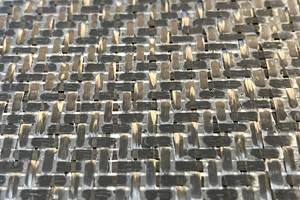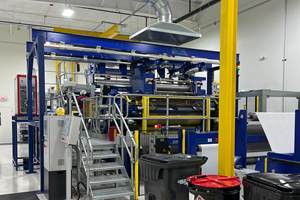How do we integrate composites into the auto supply chain?
I am attending this week (Sept. 7-9) the Society of Plastics Engineers’ (SPE) Automotive Composites Conference and Exhibition (ACCE) in the Detroit suburb of Novi, MI, US.
I am attending this week (Sept. 7-9) the Society of Plastics Engineers’ (SPE) Automotive Composites Conference and Exhibition (ACCE) in the Detroit suburb of Novi, MI, US. The first time I attended this event, in 2007, there were — maybe — 300 people in attendance. By 2009, with the Great Recession in full swing, it seemed like those who gathered at ACCE were glad to be producing vehicles at all, much less ones that incorporated composites. By 2012, conference participants were seeing some light at the end of the automotive tunnel, and it was not unreasonable to think that composites had a future in automotive, particularly given new and aggressive corporate average fuel economy (CAFE) standards.
Today, ACCE is, without doubt, the largest automotive composites event in the world, attracting more than 900 people and 75 exhibitors, and featuring more than 90 technical paper presentations. And all of us, including me, are here learning about new bonding technologies, sheet molding compound innovation, fiber reinforcement draping simulation ... and much more.
The people here represent the entire automotive supply chain, ranging from resin suppliers to composites fabricators to (yes!) OEMs — 130 or so, from what I hear. They represent some of the best automotive engineering minds the world has to offer, and they ask excellent questions of highly qualified, thoroughly vetted speakers who present well-researched papers.
There is one question, however, that seems to generate a different answer for each person to whom I put it. The question is this: If the growth of ACCE is symptomatic of the overall growth of composites in automotive, then all those really great composite parts that result must be integrated into the automotive supply chain. How is that going to work?
I ask this question for two reasons: First, the automotive supply chain is a world unto itself, full of rules, traditions and expectations found nowhere else in the manufacturing world. Second, except for a very small handful of companies, there are none in the composites world that have experience serving that supply chain. And although this handful of companies might be able to serve a few customers’ needs, they alone cannot serve the entire industry.
So, if, in fact, automotive OEMs not named BMW are serious about using composites in quantities that — to us — might represent the next Great Composites Expansion, who is going to do the actual work required to make it happen? Where will the technical brain-power and manpower come from? Who can provide parts in the quantities the auto industry requires? Which processes will be used? How will all this be integrated into the automotive supply chain?
I used to think that the automotive Tier 1 suppliers would be handed the job, but aside from activity at companies such as Magna, Continental Structural Plastics and Faurecia, it’s difficult to tell how much legwork Tier 1s are doing. That leaves a few possibilities, as far as I can see.
First, maybe it’s too much to expect that one type of supplier can meet the automotive industry’s composites needs. Perhaps a cooperative venture is required, involving resin suppliers, fiber suppliers, fabricators and Tier 1s. There is some evidence to support this, particularly on the materials side, where resin and fiber suppliers already supply technical know-how to a variety of automotive OEMs.
Second, perhaps we are on the verge of the emergence of a disruptive technology — like, for example, liquid compression molding — that will make composites unbelievably attractive to automotive OEMs. Or, perhaps Google or Apple are developing disruptive vehicles that will transform how we think about transportation, and manufacturing for transportation.
Third, we might be on the cusp of a Pretty Good Composites Expansion, one in which we’ll see composites consumed in moderate volumes and only in mid-level to high-end cars. Not the end of the world, but definitely lacking the satisfaction of that full-blown Great Composites Expansion.
So, there you have it — three speculative answers to one question from one person. I’m all ears if you have your own ideas about what the future might hold. E-mail me at jeff@compositesworld.com.
Related Content
Pontacol thermoplastic adhesive films are well-suited for composite preforms
Copolyester- and copolyamide-based adhesive films eliminate the need for sewing threads or binders when stacking laminates while improving the final part’s mechanical properties.
Read MoreComposite resins price change report
CW’s running summary of resin price change announcements from major material suppliers that serve the composites manufacturing industry.
Read MorePark Aerospace launches aerospace, MRO structural film adhesive
Aeroadhere FAE-350-1 is a curing epoxy formulation designed for composite, metal, honeycomb and hybrid applications.
Read MoreXlynX Materials BondLynx and PlastiLynx for low surface energy PP, PE substrates
Award-winning Xlynx materials use breakthrough “diazirine” technology to boost bond strength up to 950% as adhesives, primers and textile strengtheners.
Read MoreRead Next
Composites end markets: Energy (2024)
Composites are used widely in oil/gas, wind and other renewable energy applications. Despite market challenges, growth potential and innovation for composites continue.
Read MoreFrom the CW Archives: The tale of the thermoplastic cryotank
In 2006, guest columnist Bob Hartunian related the story of his efforts two decades prior, while at McDonnell Douglas, to develop a thermoplastic composite crytank for hydrogen storage. He learned a lot of lessons.
Read MoreCW’s 2024 Top Shops survey offers new approach to benchmarking
Respondents that complete the survey by April 30, 2024, have the chance to be recognized as an honoree.
Read More























